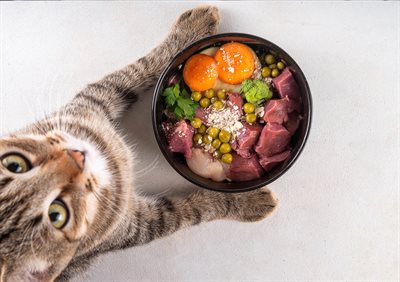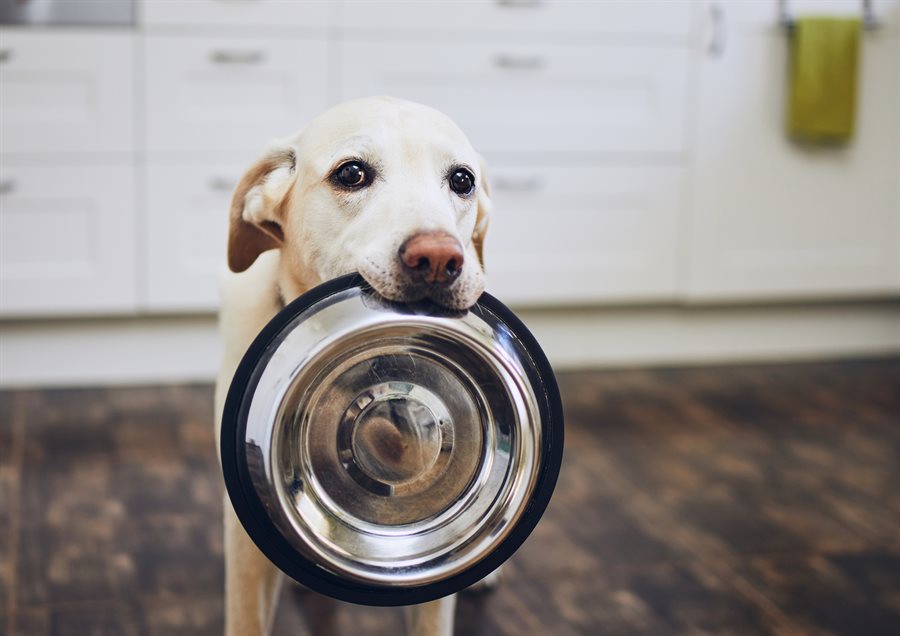Safety advice for feeding a raw pet food diet
Tips to prevent infection and illness during the purchase, storage, handling and preparation of raw pet foods
October 13th, 2025
A raw pet food diet can include items such as raw meat, chicken, fish vegetables, fruit and eggs.
A significant portion of pet food meat comes from animal by-products, or parts of animals, that are not suitable for human consumption.
It's important to remember that any raw food can contain harmful bacteria, viruses, protozoa and parasites including Salmonella, E.coli, Campylobacter, tapeworms and roundworms.
Normally these pathogens would be killed by the cooking process, so a lack of heat treatment can pose a risk of infection and illness to not only pets, but to other household members who have contact with pets. The proper storage, handling and preparation of raw food is extremely important to prevent infection in your household.
Remember that dehydrated pet treats and chews are not cooked in the same way as human food. They are slowly dried at a low temperature to remove moisture, and are not processed at temperatures that will kill all pathogens
Always
| Buy raw meat for your pet from a reputable supplier. | Serve raw food in stainless steel or glass bowls as these are easier to disinfect. Plastics can harbour bacteria in scratches and cracks. |
|---|
|
Freeze your pet’s raw food until it is ready to use to prevent further bacteria growth. Freezing raw meat at -18C for 10 days can remove most parasitic risks.
|
Wash, then disinfect all surfaces, bowls and utensils that have come into contact with raw meat and other raw foods and disinfect your pet’s bowl after every meal. |
| Store raw pet food separate from human food. |
Discard any uneaten pet food promptly. |
|
Defrost frozen pet food in a sealed container at the bottom of the fridge to prevent any contamination of other foods.Defrost only the amount needed and do not refreeze.
|
Wash hands thoroughly to remove any organisms that can make you unwell. Use hot water and soap after handling any raw pet food, treats, bowls or anything used to prepared raw feed. |
| Prepare your pet’s raw food using specific cutting boards, bowls and utensils to avoid spreading bacteria, viruses and parasites onto items intended for human use. |
Consider food safety when travelling – Use freeze dried, air dried or dehydrated raw foods that do not require refrigeration. Bacteria will rapidly grow on raw meats when kept above 4-8 degrees C.
|

Never
| Never feed foul smelling meat, chicken or fish to your pet. | Never allow children to touch raw pet feeding bowls or eat raw pet food. |
|---|
|
Never defrost raw meat in the microwave. The food will thaw unevenly and can heat up parts of the food to temperatures where bacteria will rapidly multiply.
|
Never ignore signs of illness in your pets or family. Look out for loose stools, vomiting, lethargy or any other illness concerns. Consult your pets vet for advice or GP if another family member becomes unwell.
|
|
Never rinse or wash raw pet food packaging for recycling.
The packaging will contain the same bacteria, viruses and parasites as the raw food, so you could unknowingly spread microscopic pathogens around your kitchen that could give your family members sickness and diarrhoea symptoms.
|
Never wash raw pet food containers, preparation boards and utensils at the same time as your other kitchen equipment.
Wash these items separately with a separate cloth, sponge or brush and disinfect your sink or washing up bowl afterwards with a bleach-based cleaning product.
|
| Never let your pet lick your face after it has eaten raw food. |
|
Remember – Bacteria, viruses and parasites are excreted in the faeces. It is very likely that your pet will harbour more of these organisms when fed a raw diet so additional care is required when cleaning up after your pet.